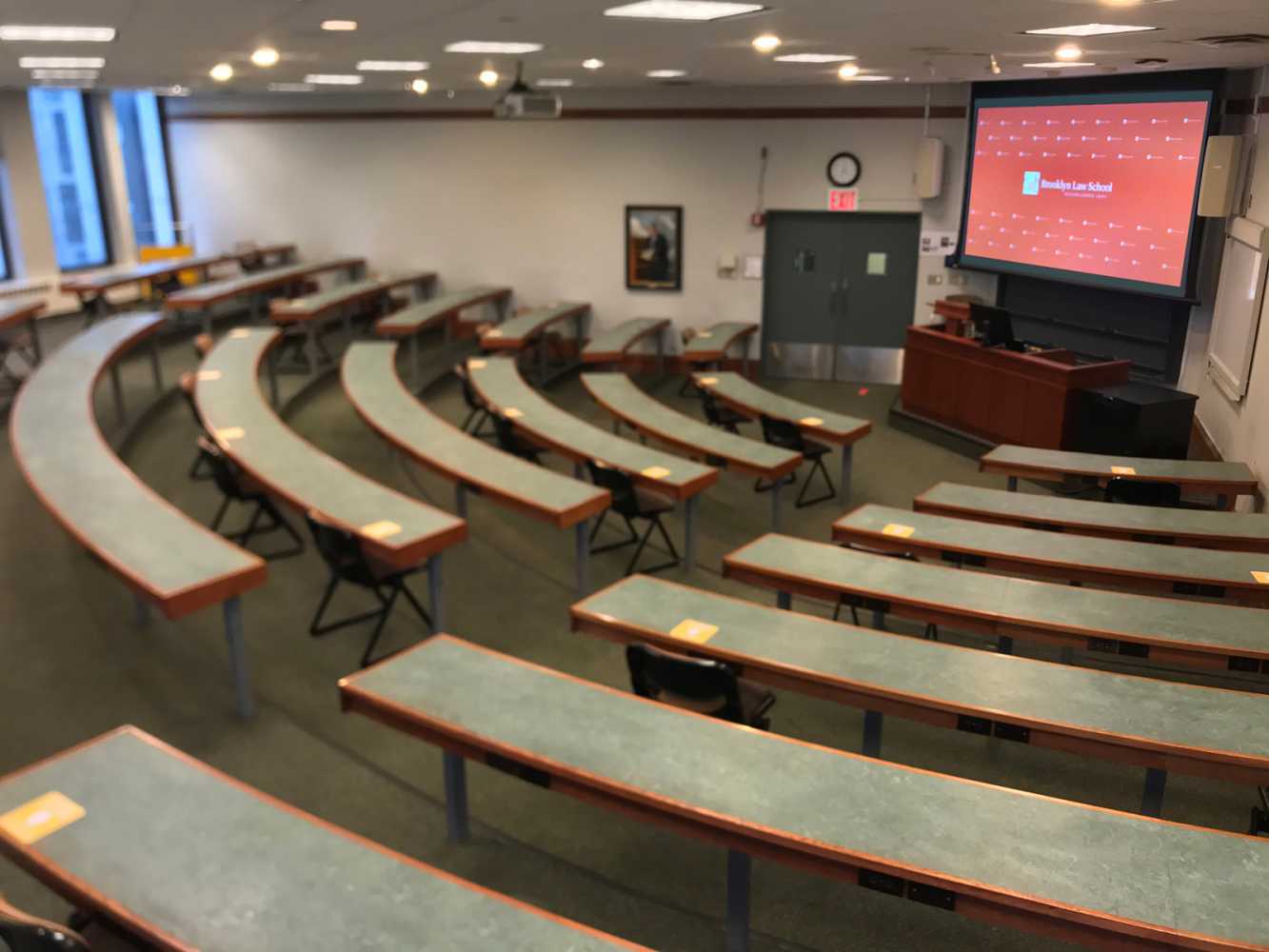Law school upgrades AV with LEA Professional
- Details

In response to the COVID pandemic this year, the Brooklyn Law School wanted to make sure that specific classes could start up and continue as safely and efficiently as possible. The school contains some seminar-based classrooms where the instructors and law students typically engage with a lot of interactivity as they debate a range of different concepts and theories in the class.
To achieve a safe level of social distancing, the school decided to shift to a hybrid attendance model with only half the students in the classrooms at any one time. In order to facilitate this model, the faculty needed the seminar- based classrooms to be equipped with an AV solution that would allow remote students to hear and interact as efficiently as possible and keep all students fully engaged.
Brooklyn Law School brought in Shadowbox Design Management, from Hicksville, New York, to manage the project.
Joseph Ondrek, vice president, Shadowbox Design Management, explained that the classroom had an existing AV system based on lavalier microphones, but mics were often misplaced, or they would forget to turn them on. There were too many things to go wrong, and instruction time was wasted with troubleshooting. In addition to the distance learning capabilities, the school wanted a solution that would allow the professor to walk in, start the Zoom meeting, and then get right to the instruction.
“They didn’t want the instructors to have to worry about any equipment problems; they needed a system that's simple to operate with complete, high-quality coverage that just worked," said Ondrek. “These were issues they wanted to correct before the pandemic, but the distance-learning requirements brought home the need for a new approach to their AV system and a significant technology upgrade."
The Shadowbox team did all the concept, design, and installation work for the project. The install began with upgrading two primary lecture-style classrooms with multiple Sennheiser TeamConnect in-ceiling microphones in each room to cover the roughly 900 sq ft per space. For output, they installed a set of 10 in-ceiling speakers in each classroom, powered by amplifiers from LEA Professional.
“The audio is integrated with a QSC Q-SYS Ecosystem linked to a PC running Zoom so that remote students could hear and interact with the students and teacher in the class seamlessly,” said Ondrek. “We used one QSC Core to manage both rooms, utilizing the Dante connections to route audio to the second room using the school’s existing LAN.”
The audio system delivers quality audio through Zoom to the remote students, providing voice lift across the classroom from the teacher to the students. Ondrek explained that all students in the classrooms - those on the extreme left and right sides of the rooms and far in the back - can hear clearly, be heard clearly, and interact optimally.
“The LEA amplifiers gave us the channel count we needed to distribute audio throughout the different arrays and groups that we needed to divide up the speakers in the room,” said Ondrek. “They have two rooms running off of one QSC core, the first room has analogue connections happening right out of the core, but the second room’s audio connections are made through Dante, so we’re able to leverage the school's IT network to take the Dante from one classroom to the other instead of having to run extra cables.”
Ondrek explained that this was a full AV system upgrade, including full audio system integrated with the projection system. Now the teachers can simply walk into the classroom, engage the touch screen, and the system starts up, freeing the instructor to focus on the lesson at hand.
“The professors don't have to worry about the mics, speakers, amps, or any system components being on or anything like that; it's a high-quality, functional, and easy-to-use system,” said Ondrek. “We designed the system to be as intuitive as possible. The instructors go through a brief system orientation, and within about 15 minutes, they are comfortable and up and running without any issues or concerns.”
















